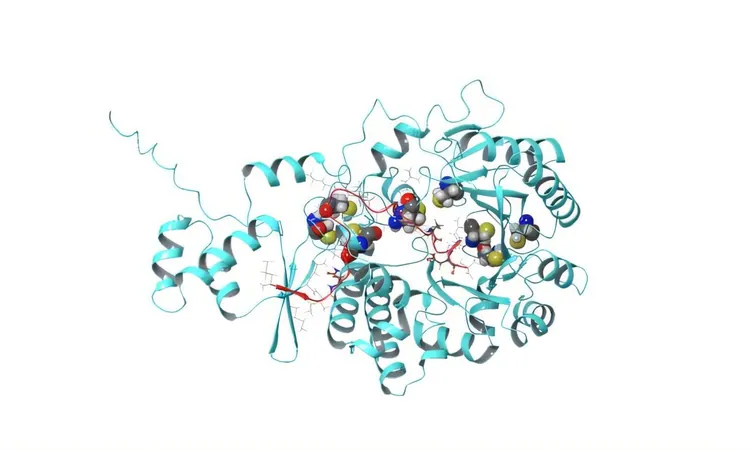
Revolutionary Poplar Tree Findings Set to Transform Bioenergy and Biomaterials
2025-08-18
Author: Wei Ling
In a groundbreaking study, researchers from the University of Missouri, in collaboration with Oak Ridge National Laboratory and the University of Georgia, have unveiled how poplar trees naturally modify their wood chemistry in response to environmental factors. This remarkable discovery promises to enhance the production of sustainable biofuels and a variety of eco-friendly materials.
Unlocking the Power of Lignin
Lignin, a crucial element found in nearly all plants, serves as a natural glue and protective armor, keeping plants resilient against environmental stresses while aiding in water transport. Jaime Barros-Rios, an assistant professor of plant molecular biology, emphasized its significance: "Understanding how plants produce lignin can revolutionize the creation of high-value biomaterials and boost the competitiveness of U.S. biorefineries."
Why Are Poplars So Special?
Poplar trees, already a staple in the paper and pulp industry, are emerging as a promising source for bioenergy and bioplastics. Their fully mapped genome allows researchers to dig deep into their biology, leading to transformative findings.
A team investigated 430 samples of ***Populus trichocarpa***, a poplar species prominent in western North America. They discovered that trees in warmer climates produced lignin with a higher syringyl-to-guaiacyl (S/G) ratio, directly affecting the wood's properties and its suitability for biofuel production.
Unexpected Discoveries and Genetic Insights
Beyond expectations, the team utilized 3D computer modeling to reveal a mutation in a crucial enzyme called laccase, which regulates the S/G ratio in poplar. Senior biochemistry student Rachel Weber expressed her surprise at the finding, noting that the mutation was located outside the enzyme's active center, indicating previously unknown regulatory pathways at play.
Additionally, researchers stumbled upon trace amounts of a rare type of lignin known as C-lignin, previously thought to exist only in plant seeds like vanilla and cacti. C-lignin's simpler structure makes it easier to convert into renewable materials, offering a new avenue for biofuels and bioplastics.
A Glimpse into the Future
Looking ahead, the University of Missouri team plans to genetically engineer poplar trees and soybeans to boost their C-lignin content, paving the way for more efficient biomass processing in future biorefineries.
This pivotal study, published in *Proceedings of the National Academy of Sciences*, brings us closer to unlocking the vast potential of trees in sustainable energy and material production, offering a green solution to our energy needs.




 Brasil (PT)
Brasil (PT)
 Canada (EN)
Canada (EN)
 Chile (ES)
Chile (ES)
 Česko (CS)
Česko (CS)
 대한민국 (KO)
대한민국 (KO)
 España (ES)
España (ES)
 France (FR)
France (FR)
 Hong Kong (EN)
Hong Kong (EN)
 Italia (IT)
Italia (IT)
 日本 (JA)
日本 (JA)
 Magyarország (HU)
Magyarország (HU)
 Norge (NO)
Norge (NO)
 Polska (PL)
Polska (PL)
 Schweiz (DE)
Schweiz (DE)
 Singapore (EN)
Singapore (EN)
 Sverige (SV)
Sverige (SV)
 Suomi (FI)
Suomi (FI)
 Türkiye (TR)
Türkiye (TR)
 الإمارات العربية المتحدة (AR)
الإمارات العربية المتحدة (AR)